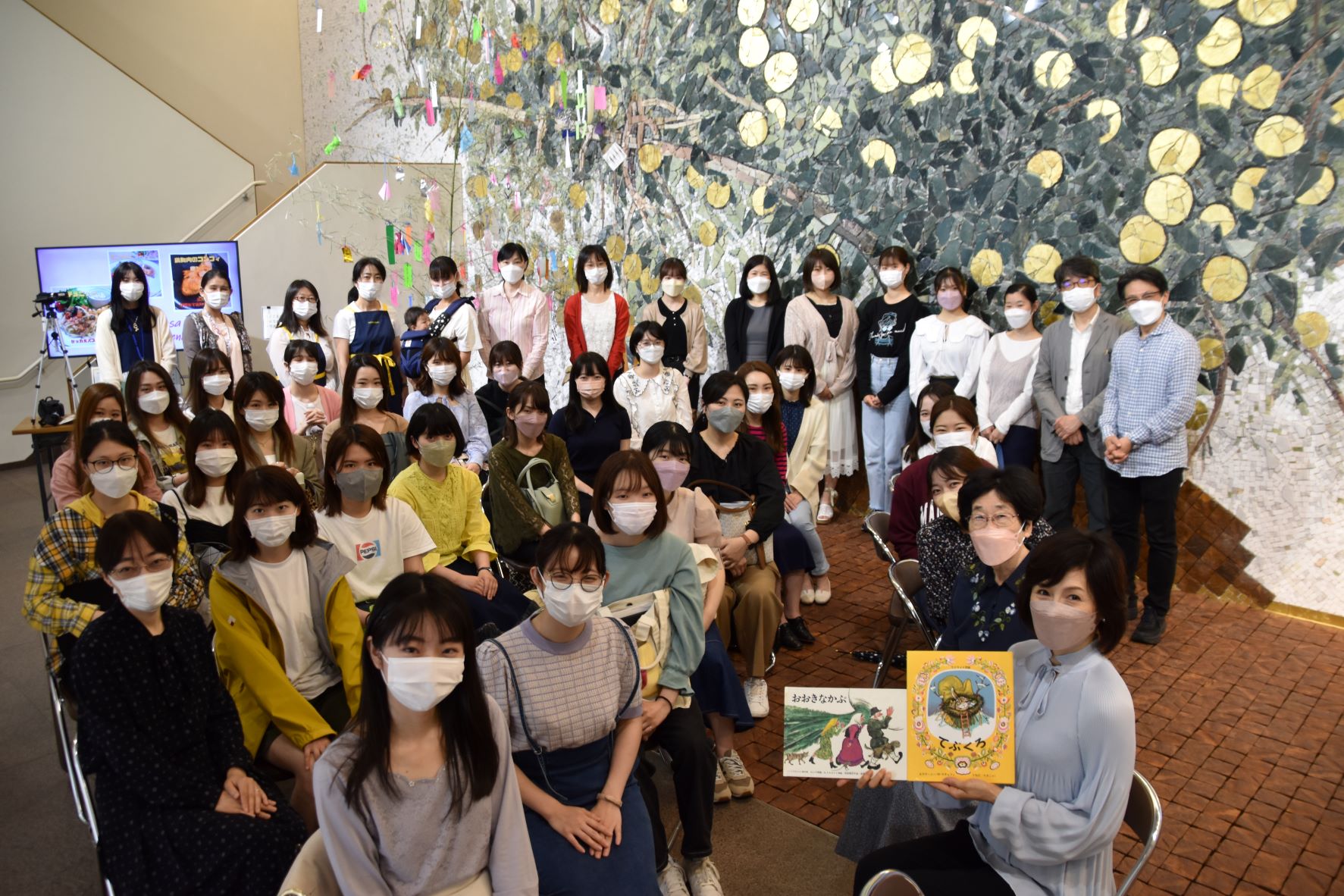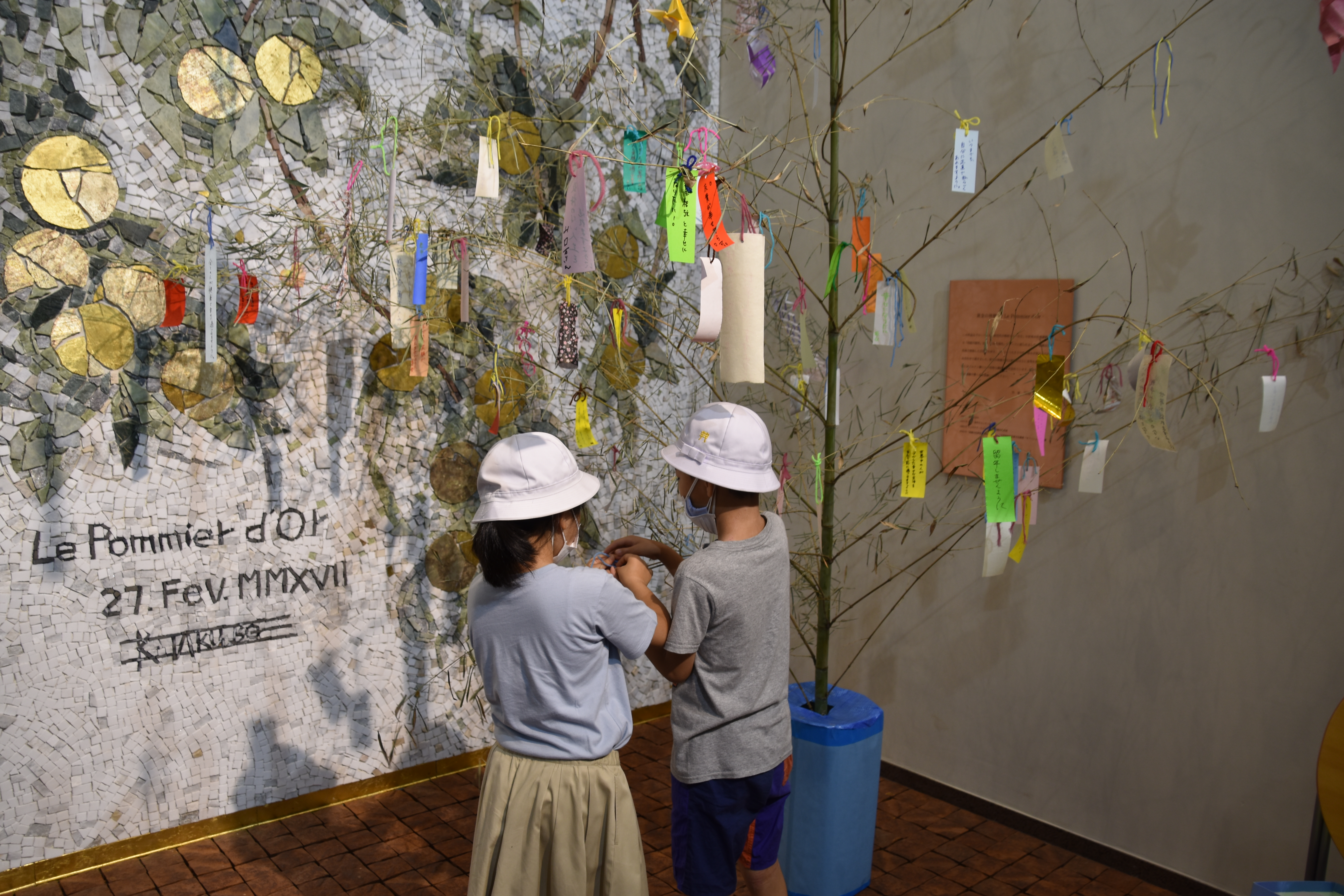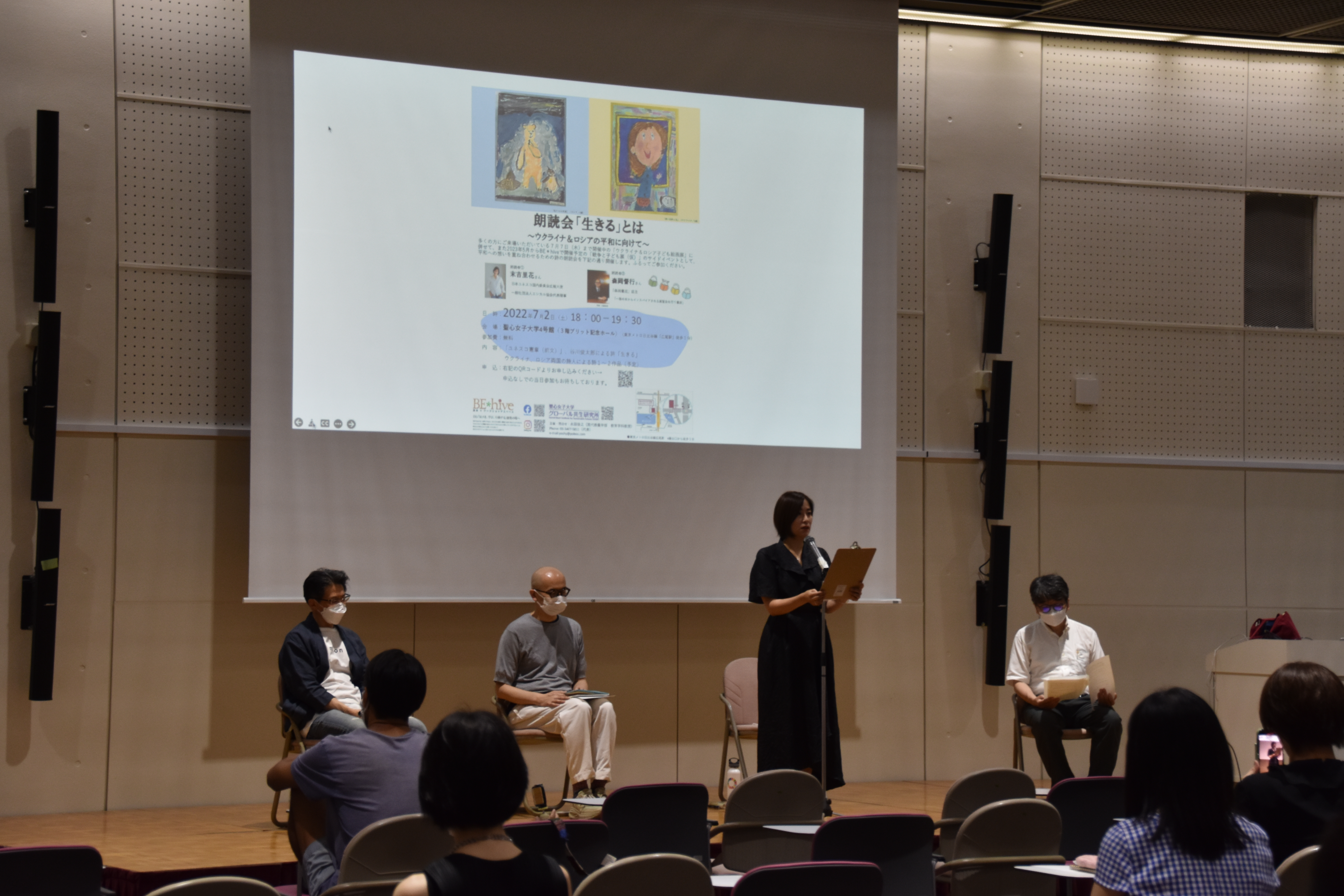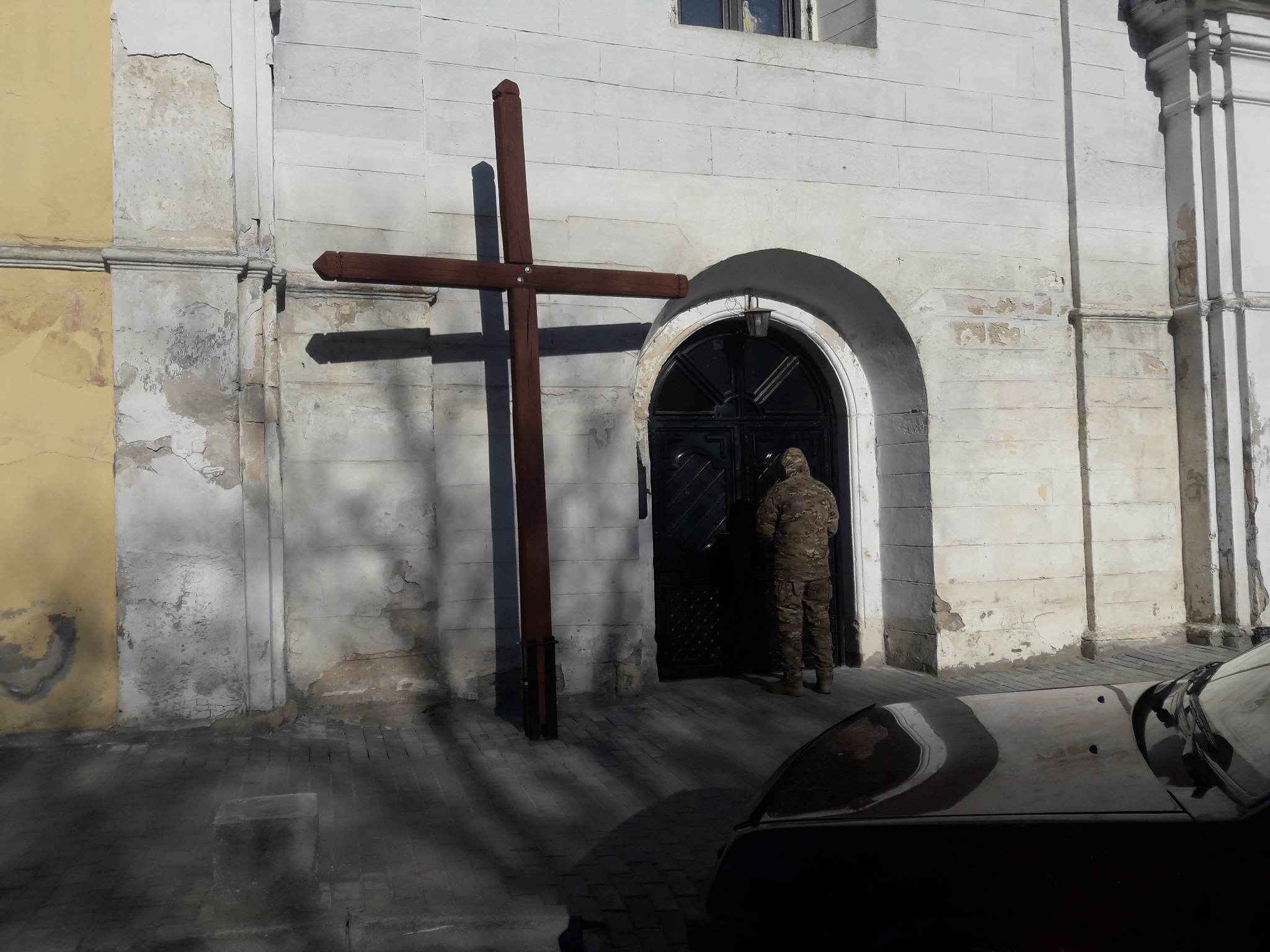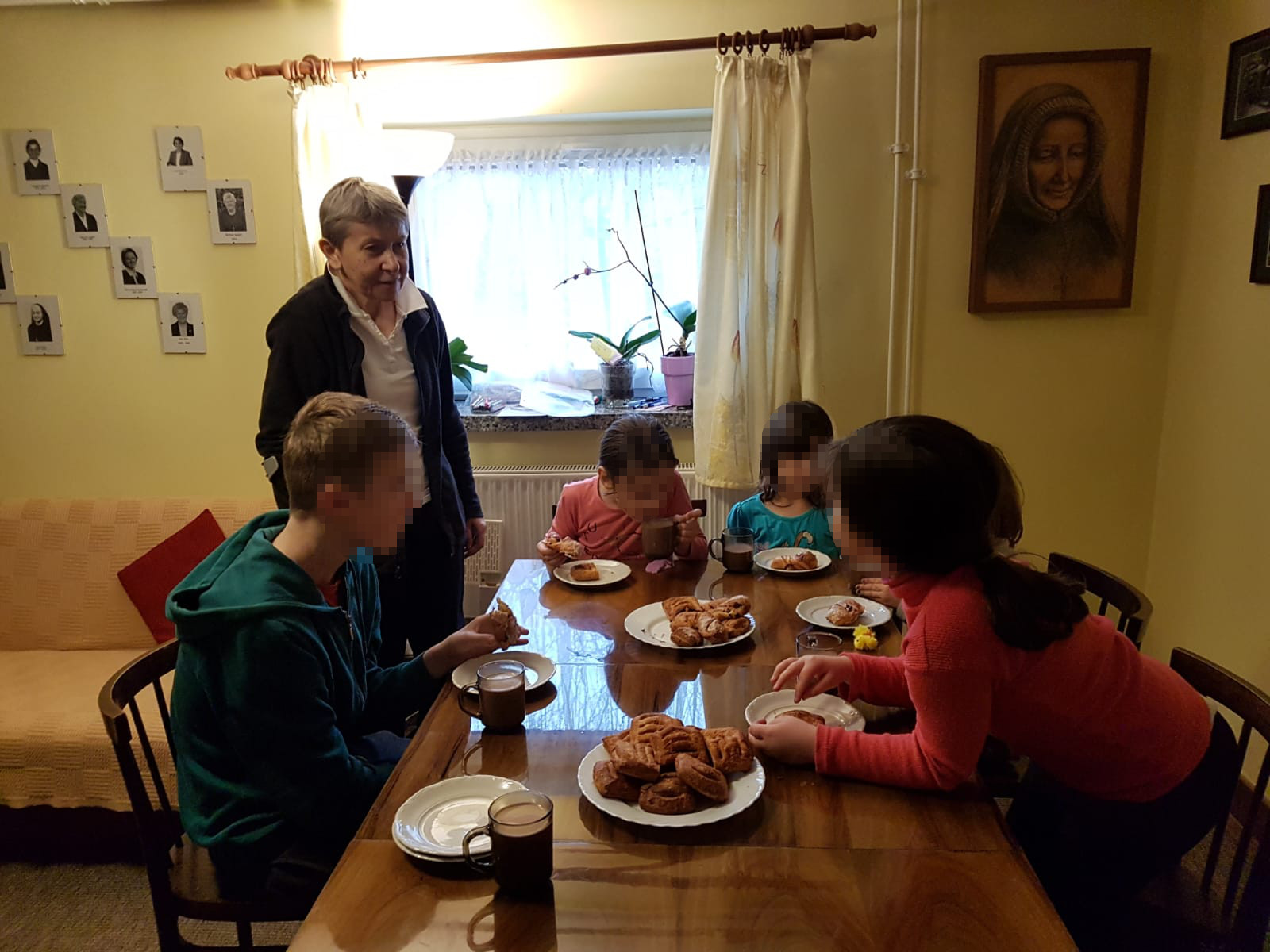From May 5 (“Children’s Day” in Japan) to July 7, 2022, the Sacred Heart Institute for Sustainable Futures held the “Ukrainian and Russian Children’s Art Exhibition” with the hope that the exhibition would help to spread the message of peace on earth. Thirty-four drawings and paintings by Ukrainian and Russian children were displayed and the funds raised were donated to the Japanese Red Cross Society for the Ukraine Humanitarian Crisis Relief Fund. Several related events, such as sessions of reading picture books, as well as poetry from both countries, were held during the exhibition. Many people, including children, visited the venue to share their thoughts on peace. We believe that, even though what each of us can do might be small, our unceasing desire for peace is a great strength.
At the entrance of Building 4 of the University of the Sacred Heart, in the Seishin Global Plaza (hereafter “the Seishin Global Plaza”), in Tokyo, Japan, thirty-four drawings and paintings by Ukrainian and Russian children were displayed. These drawings and paintings of skating, family, owls, and other children were entry works submitted to “The International Children’s Art Exhibition”, organized by the Foundation for Art Education, and they honestly express the children’s daily lives and hearts, free from adult interference. There was a donation box at the venue, and all funds were donated to the Japanese Red Cross Society for the Ukraine Humanitarian Crisis Relief Fund.
This exhibition was planned by two professors in the Department of Education at the University of the Sacred Heart, who hoped that this exhibition would be a chance to share our thoughts on world peace while caring for the future of our children. The subtitle of the exhibition was “Reimagine all the people living life in peace”, borrowing the chorus from Imagine by John Lennon and Yoko Ono. The reason for adding “Re” to the title, which was not part of the original lyrics, was taken from one of UNESCO’s recent reports, ”Reimagining Our Futures Together: A New Social Contract for Education”.
Several associated events were held during the exhibition: the Tanabata Festival; Ukrainian and Russian picture book reading sessions; a visit of elementary school students; and poetry readings.
On July 7, for the “Tanabata” festival in Japan, which is also known as the star festival, people write their wishes on colorful strips of paper (tanzaku) and hang them on bamboo branches to pray that their wishes will come true. Bamboo and tanzaku paper were provided at the Seishin Global Plaza, starting on May 5, so visitors could freely make their wishes. The bamboo at the venue became more colorful day by day with the prayers of all the visitors, as if it were lit by the light of hope.
On May 31, picture book readings were held. Mizuno Maki, an actress and a graduate of the University of the Sacred Heart, read two picture books aloud: The Mitten (in Ukrainian: Рукавичка), a Ukrainian folk tale, and The Giant Turnip (in Russian: Pепка), a Russian folk tale. Students listened to the readings, then wrote their own prayers for peace on tanzaku paper.
On June 17, approximately one hundred students from Kogai Elementary School, their art teacher, and the principal visited the Seishin Global Plaza. The elementary school has many foreign children, including Ukrainian and Russian children. All of the drawings and paintings in the exhibition were from before the military invasion of Ukraine. A professor in charge of organizing the exhibition told the students to imagine the current situation of the children who created these masterpieces. The students listened intently, looked at the drawings and paintings, sketched the venue, and wrote their prayers on tanzaku paper. What did they feel, imagine and pray for?
On July 2, for the last related event, poetry readings were held to pray for peace for Ukraine and Russia. Rika Sueyoshi, a member of the Japanese National Commission for UNESCO Public Information Ambassadors, and a book director, Yoshiyuki Morioka, took the stage. The reading session included the preamble to the UNESCO Constitution, poems by Ukrainian and Russian poets, and the poem, Ikiru (To Live) by the famous Japanese poet, Shuntaro Tanikawa. An audience of about fifty people participated in the event and pondered what it means “to live”. At the venue, student groups supporting refugees called for donations, and the funds raised were donated to the UNHCR, the UN Refugee Agency.
As stated in the preamble to the UNESCO Constitution, “since wars begin in the minds of men, it is in the minds of men that the defenses of peace must be constructed”. Although this art exhibition began as the idea of just two people, it has drawn media attention, and the circle of peace is expanding, with other universities making similar efforts.
We believe that even though what each of us can do might be small, our unceasing desire for peace is a great strength.
Section |International News
Province |Japan
